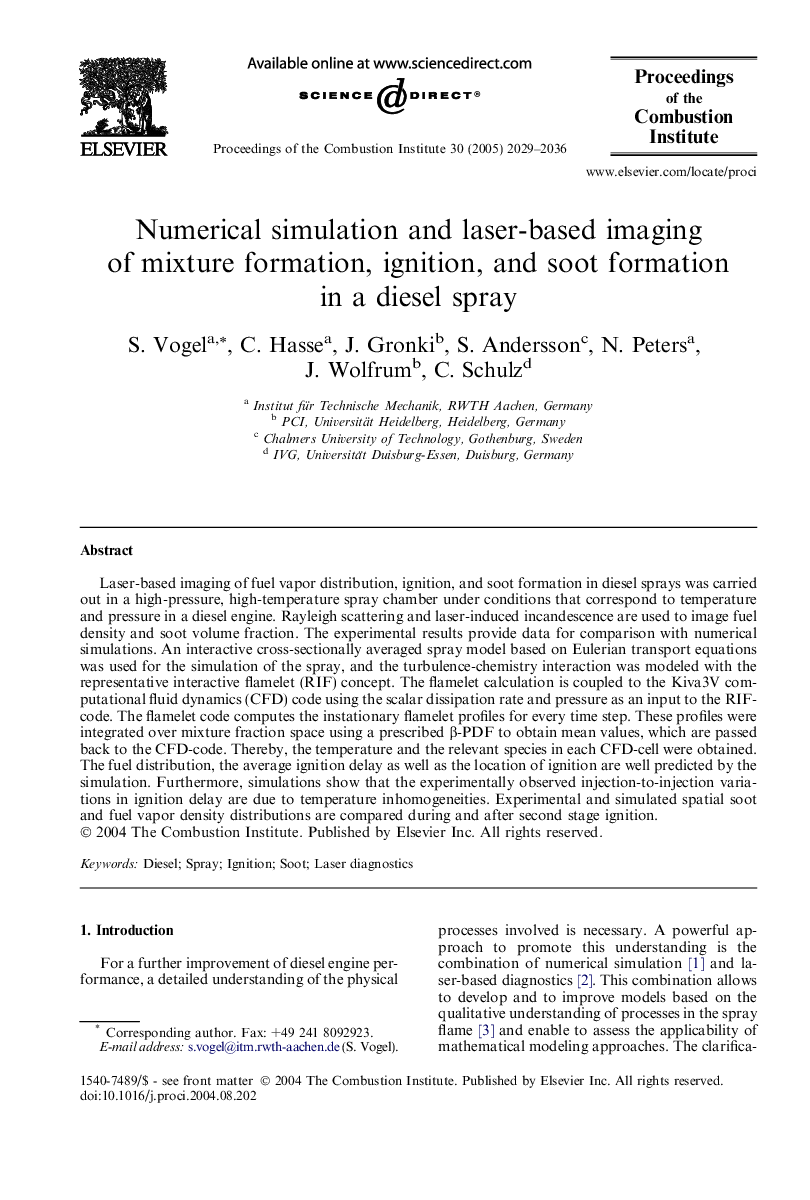| Article ID | Journal | Published Year | Pages | File Type |
|---|---|---|---|---|
| 240945 | Proceedings of the Combustion Institute | 2005 | 8 Pages |
Laser-based imaging of fuel vapor distribution, ignition, and soot formation in diesel sprays was carried out in a high-pressure, high-temperature spray chamber under conditions that correspond to temperature and pressure in a diesel engine. Rayleigh scattering and laser-induced incandescence are used to image fuel density and soot volume fraction. The experimental results provide data for comparison with numerical simulations. An interactive cross-sectionally averaged spray model based on Eulerian transport equations was used for the simulation of the spray, and the turbulence-chemistry interaction was modeled with the representative interactive flamelet (RIF) concept. The flamelet calculation is coupled to the Kiva3V computational fluid dynamics (CFD) code using the scalar dissipation rate and pressure as an input to the RIF-code. The flamelet code computes the instationary flamelet profiles for every time step. These profiles were integrated over mixture fraction space using a prescribed β-PDF to obtain mean values, which are passed back to the CFD-code. Thereby, the temperature and the relevant species in each CFD-cell were obtained. The fuel distribution, the average ignition delay as well as the location of ignition are well predicted by the simulation. Furthermore, simulations show that the experimentally observed injection-to-injection variations in ignition delay are due to temperature inhomogeneities. Experimental and simulated spatial soot and fuel vapor density distributions are compared during and after second stage ignition.
